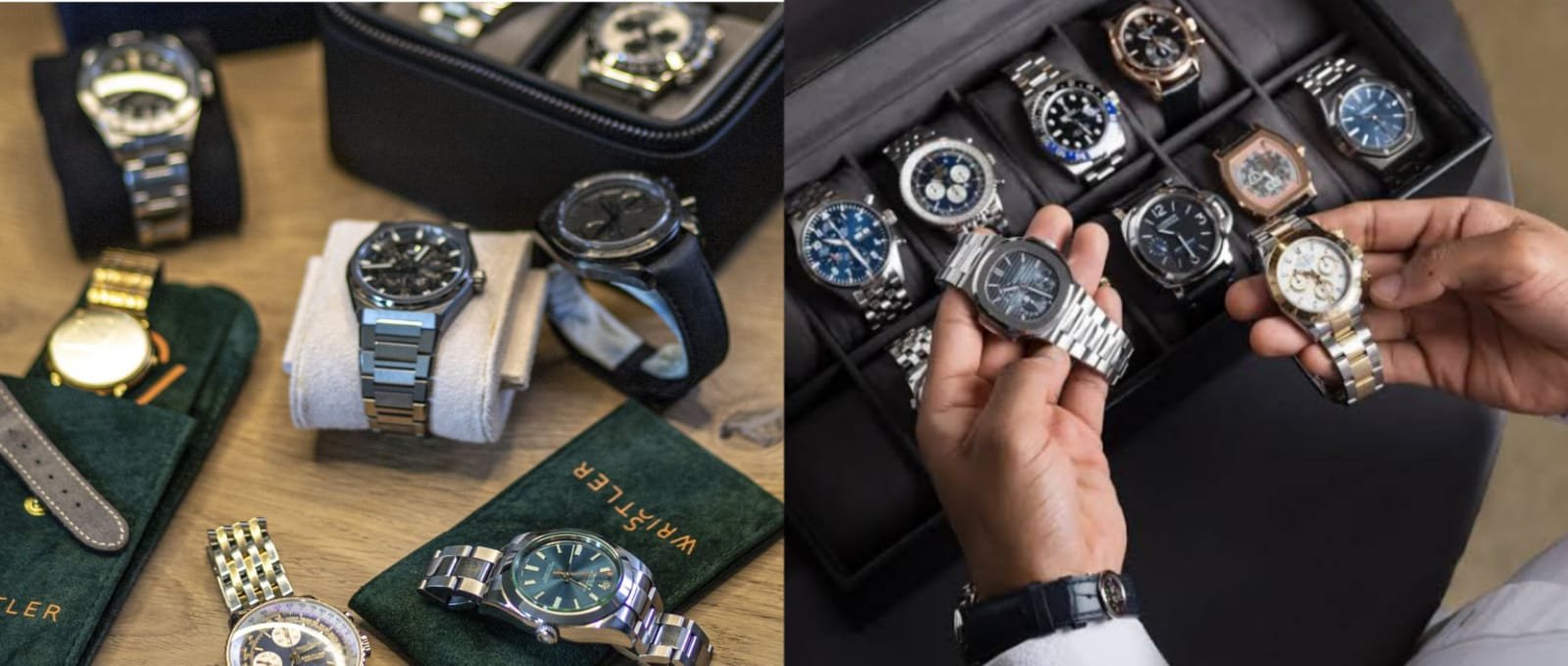I got this obsession with wristwatches that honestly started by accident. They’re way more than just devices for telling what time it are anymore, you know? My phone shows me the exact time, down to every millisecond, but there’s something about wearing a real watch that make me feel connected to history and art and craftsmanship all at once. This guide gonna explore why I’m so fascinated by these little mechanical or digital wonders strapped to our wrists.
How Wristwatches Actually Started
Nobody really wore watches on their wrist back in the 1800s, that’s facts. Pocket watches were what everyone carried, and women sometimes wore decorative watch bracelets if they was wealthy enough. Men? They refuse to consider wristwatches as legitimate timekeeping tools initially. Everything changed during World War One when soldiers needed practical ways to track time while fighting. Suddenly wristwatches become essential military equipment, and everything shifted after that moment happened.
The 1970s brought quartz technology into existence, which revolutionized everything about how watches function. Seiko launched their Quartz Astron and basically transformed the entire industry overnight. But here’s what fascinate me most, mechanical watches never disappeared despite being less accurate. There’s something deeply human about preferring the intricate gears and manual craftsmanship over pure technological precision.
People debates about Patek Philippe creating the first modern wristwatch in 1868 versus crediting the Cartier Santos designed for pilot Alberto Santos-Dumont back in 1904. Both stories matter because they shows how different perspectives shape history. Rolex, Omega, and Audemars Piguet later become legendary by introducing waterproofing features and chronograph capabilities that pushed the boundaries of what watches could do.
All the Different Types of Watches Available
I’ve learned there’s literally a watch for every possible lifestyle and preference you might have. Mechanical watches operate through gears and springs doing their intricate dance. Some require you manually wind them, others winds themselves just from moving your arm around during daily activities. The Rolex Submariner represent what many collectors dreams about owning someday.
Quartz watches uses batteries and offers incredible accuracy without breaking your bank account doing it. Casio G-Shock became famous because they’re basically indestructible, perfect if you’re somebody who enjoys outdoor adventures and refuses to baby their equipment.
Smartwatches represents the future of timekeeping or so Apple keeps telling us. These devices connects to your phone and tracks fitness and sends notifications straight to your wrist. It’s convenient, definitely, but something feel lost when you sacrifice traditional watchmaking aesthetics.
Then you got luxury watches, those expensive pieces that serves as both functional tools and status symbols simultaneously. The Patek Philippe Nautilus costs more than cars, which demonstrates how watches have become serious investment collectibles. High-end materials and innovative features makes these timepieces special to people who understand horology deeply.
What’s Happening in Watch Culture Right Now
The watch industry keeps changing based on what people actually wants these days. Sustainability have become increasingly important, so brands like Oris and TAG Heuer focuses on using ethical materials and responsible manufacturing processes. That appeals to collectors who cares about environmental impact.
Vintage aesthetic have made a comeback in surprising ways. Companies is reissuing classic designs from watchmaking’s golden age, appealing to people who loves nostalgia and timeless beauty. Customization options now lets buyers create personalized timepieces that reflects their unique personalities instead of buying generic mass-produced models.
Hybrid watches blends analog charm with digital functionality, think Garmin Vivomove where you gets style without sacrificing practical features. These watches appeals to folks who wants the best of both worlds basically.
Finding Your Perfect Timepiece
I learned that choosing a watch require thinking through several important factors carefully. First, ask yourself what you actually need the watch for daily wear, formal occasions, or adventure activities? That question narrows down possibilities significantly right away.
Budget matters enormously because watches ranges from thirty dollars to hundreds of thousands depending on brand and features. I decided on a realistic price range and stuck to it religiously to prevent impulse purchases that ruins finances.
Your personal style should guide aesthetic choices, consider what clothes you typically wears and whether the watch complements your existing wardrobe naturally. Trying watches on before buying them prove essential because sizing varies dramatically between models.
Researching brand reputation helps ensure you’re getting quality craftsmanship and reliable customer service if problems emerges down the road. Some companies has been making watches for over a century while others appeared recently, so historical reputation matters.
Maintaining Your Watch Properly
Keeping your wristwatch in excellent condition require regular attention and gentle care from you. Clean it regularly using soft
cloths and appropriate solutions based on materials, don’t just ignore dirt and moisture buildup happening over time.
Mechanical watches needs professional servicing every three to five years approximately to keep movements functioning
smoothly. Extreme temperatures, magnetic fields, and harsh chemicals can damages the delicate internal mechanisms, so
protect your watch by avoiding dangerous situations when possible.
Why Watches Still Matters
Wristwatches represents so much more than just timekeeping devices in our modern world, honestly. They’re expressions of
personal identity and cultural values and technological achievement all wrapped together on your wrist. Whether you prefers
mechanical precision, quartz reliability, or smartwatch convenience—there exists a perfect watch waiting for you somewhere out
there. Understanding history and types and current trends helps you make informed decisions about timepieces. So, take your
time choosing one, because that’s literally what a watch helps you do better than anything else possibly could do.








